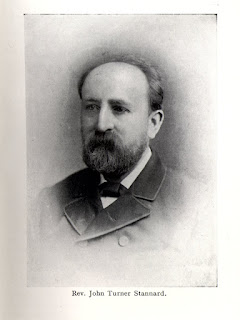Heresy and sacrifice
Index to theory pages <previous: Church as an imagined community I wish to tread gingerly here. It may be that Rene Girard's notion of sacrifice can shed some light on some cases of heresy. (Wiki: Rene Girard ) I don't pretend to understand Girard very deeply, though I have read some of his work, but I was taken by (a limited grasp of) his reconstruction of primitive sacrifice as a continuing - occasional - element in social relationships, not least in religion. My sparse summary is that, in circumstances of discontent, people look for someone to blame: a scapegoat ( Wiki ). At times, in primitive societies, generalised discontent - whatsoever its cause - would become fixed on a particular individual: someone must be to blame for the mess we're in . This someone could be at the top or the periphery of the community, but either way the sense might grow that we'd all be better off without them. In this context, the key elements of sacrifice (as opposed to murder) were...
